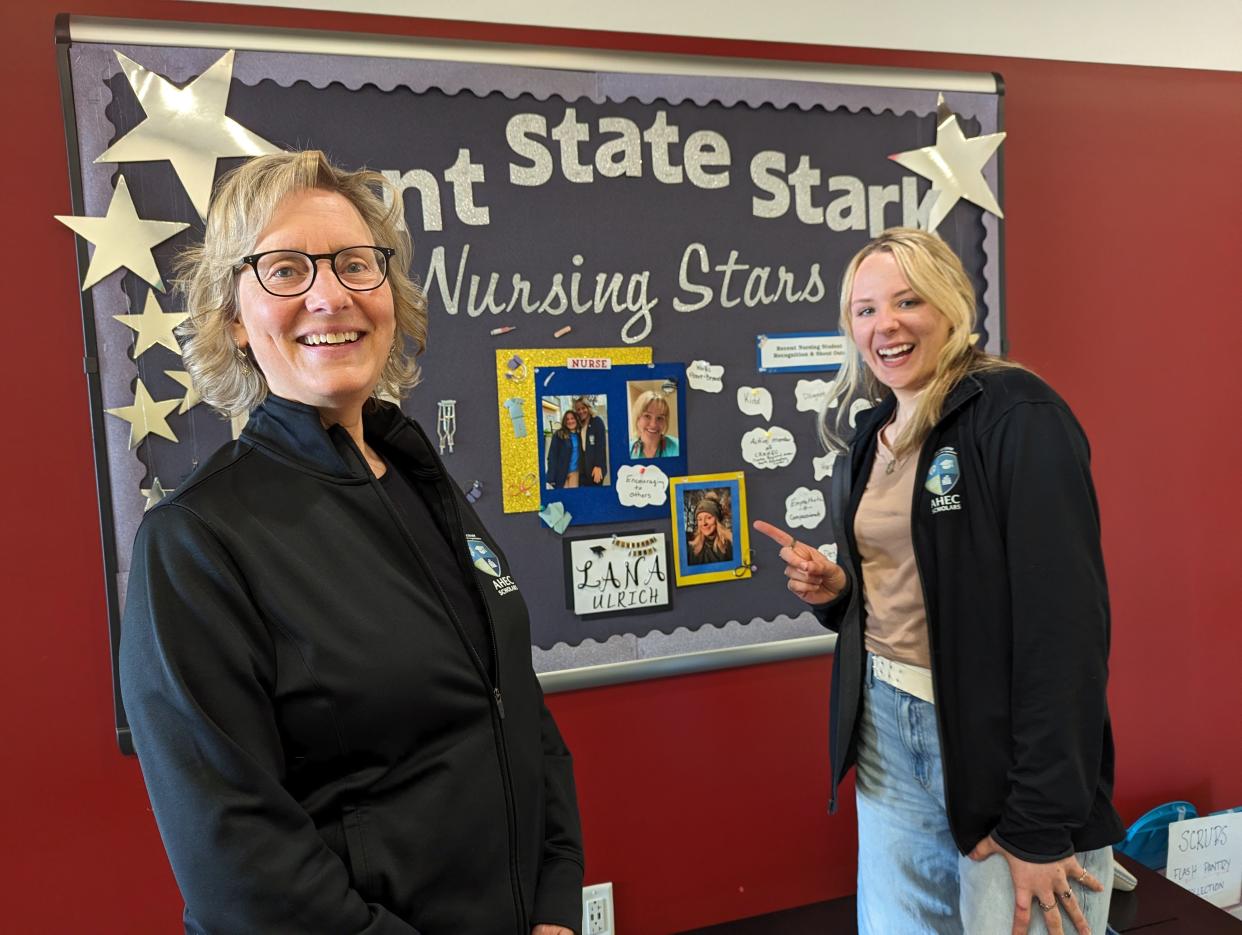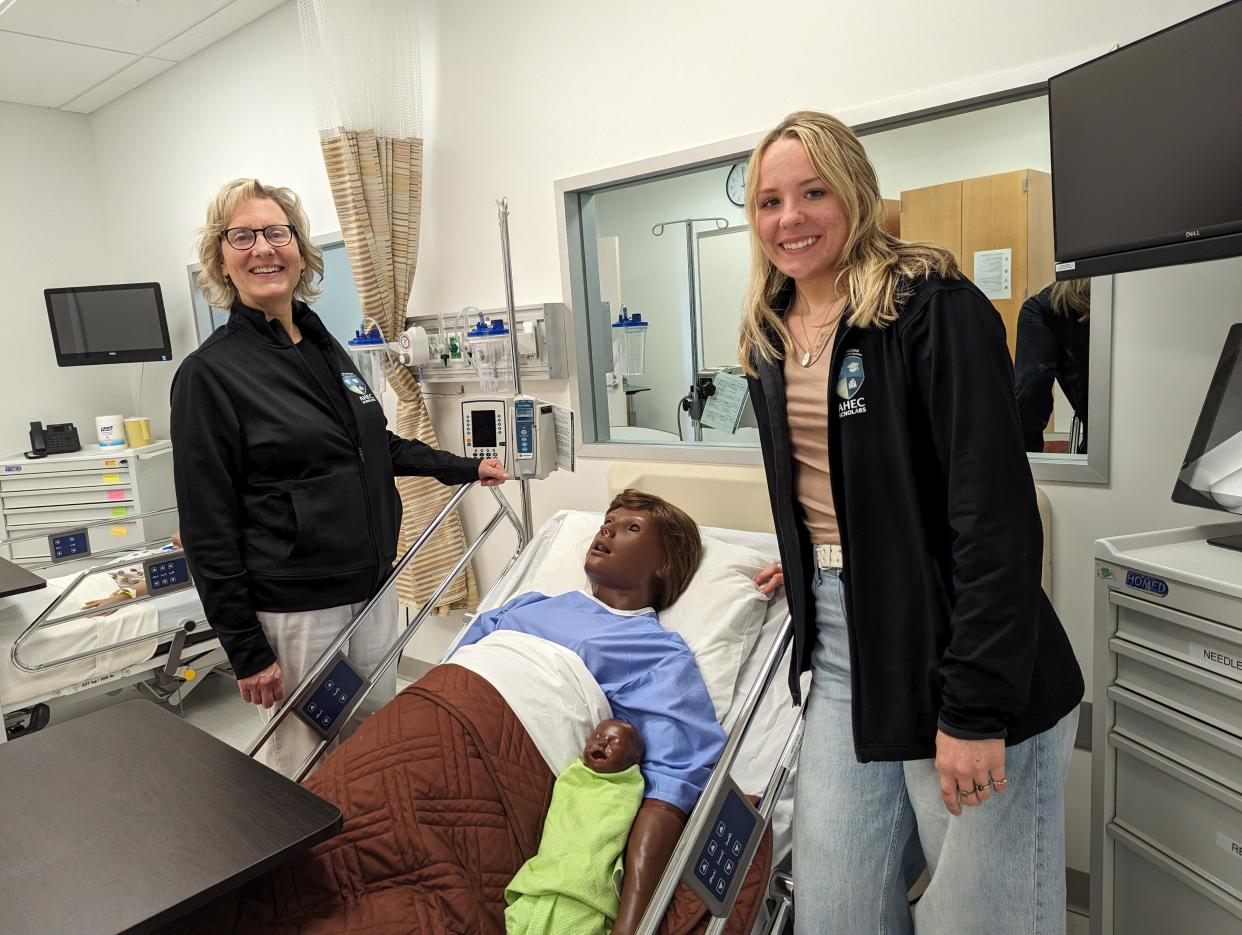NE Ohio heathcare students leading move to assist in underserved communities
JACKSON TWP. − Lana Ulrich hasn't yet graduated from Kent State University with a degree in nursing, but she's already fielding job offers.
The senior from Louisville is better prepared than most, thanks to her participation in the AHEC Scholars program, a curriculum available for free at local nursing schools, colleges and universities.

AHECs, or Area Health Education Centers, were established to promote primary-care practice in underserved communities in cities and rural areas, and to educate healthcare students and professionals about that demographic's needs and challenges.
The Northeast Ohio AHEC Office operates through four community based centers: Akron-Regional Interprofessional, Canton Regional, Cleveland Region Interprofessional and Eastern Ohio, under the auspices of NEOMED.
Does medical aid signal health?: Ohio ranks sixth in the nation for Medicaid spending. But how healthy are its residents?
"AHEC Scholars is designed to complement the academic training students get in their course curriculum," said Karen Jepsen, who took the helm as director in 2022. "One way is to give them some additional skill training. We've done programs here, like the one we just did on diabetes care in which students did some hands-on training in on how to do blood testing and equipment ... and how diabetes in the underserved population is such an epidemic, and how disparities contribute to it."
Canton group tackles treatment concerns H.O.P.E. Coalition targets opioid addiction, overdoses in Stark County's Black communities
The curriculum is a two- to three-year program with about available 30 local spots each year. It includes a $2,000 stipend for those who complete 160 hours.
"We look for students with a heart to serve the underserved populations, who are a bit ambitious, intellectually curious and have some good skills for time management." Jepsen said. "Once they're accepted, it will take them through to graduation."
Jepsen said AHEC developed the scholars component shortly before the COVID-19 pandemic, which adversely impacted its enrollment. Locally, AHEC works with public health departments as well as the Kent Stark, the Universities of Akron and Mount Union, Malone University and Youngstown State University.
"AHECs are part of a long chain of organizations cross the country; every state has an AHEC," Jespen said. "They were started with workforce development funding from the federal government in the 1970s. For a long time they have been working with on connecting communities with healthcare professionals and students. "
Ulrich was the first student to sign up for AHEC Scholars program under Jepsen. Kent Stark has provided the Canton Regional AHEC with free office space in the campus's sciences building.
"It's an incredible program," she said. "I've learned things that I never thought I would; things in my backyard like StarkFresh, the Beacon Charitable Pharmacy and the Hartville Migrant Center. They're incredible resources that I can give to my patients. I think that's what AHEC is, helping us in our professions to help our patients."
Serving the workers Hartville Migrant Center ministers to workers
Ulrich noted that not all AHEC scholars are nursing students. They include students in pre-dentistry, pre-psychology, and other healthcare specialties.

"They get to learn some of the skills that nurses do, and vice-versa," Ulrich said. "We really get a feel for other healthcare occupations."
Jepsen said that in addition to skill-based training, "everything we do is through an interdisciplinary lens," adding that she takes students into the community as a practical way to teach them about cultural sensitivity, social determinants of health such as poverty, food scarcity and other factors that impact people's health, and what's available to for them to use to help their patients."
"And also to understand what the barriers to healthcare are in underserved populations," she said. "Why they might be late to an an appointment or not show up they have to to use public transportation; why they might be no-compliant on treatment; why they may not follow the direction that a doctor or nurse may give them and how to look at it through a different perspective to try to be more effective."
One factor for health disparity, Jepsen said, is the consolidation and mergers of hospitals, which are reducing the number of facilities serving rural areas.
Less access means less service After Appalachian hospitals merged into a monopoly, their ERs slowed to a crawl
Another is the acute a shortage of nurses.
An analysis published in 2022 by Health Affairs, found that the number of registered nurses fell by 100,000 between 2020 and 2021, the largest decrease ever, and noted that the majority of those who quit were under 35 who were employed by hospitals.
But the Bureau of Labor Statistics’ Employment Projections 2021-2031, projects that the registered nursing workforce will grow by 6 % over the next 10 years, from 3.1 million in 2021 to 3.3 million by 2031.
"I think there's always going to be a shortage," Ulrich said. "It comes down to what hospitals may allocate for hiring nurses, and it comes down to a decent pay rate. Nurses are leaving the bedside because of unsafe safe working conditions and a lack of pay, and COVID made that worse. But I think we're slowly rising again."
To learn more about the AHEC Scholars program, visit www.eomed.edu/AHEC.
Reach Charita at 330-580-8313 or charita.goshay@cantonrep.com. On Twitter: @cgoshayREP.
This article originally appeared on The Repository: NE Ohio healthcare students offering aid in underserved areas
